|
BOTTICELLI - IDEALIZED PORTRAIT OF A LADY

Sandro Botticelli, Public domain, via Wikimedia Commons
1480̵-1485 |
|
- Tempera on wood.
- Idealized Portrait of a Lady
(also called Portrait of a Young Woman) is a painting attributed to the Italian Renaissance painter Sandro Botticelli, who is thought to have executed it between 1480 and 1485, although some authorities attribute authorship to Jacopo da Sellaio.
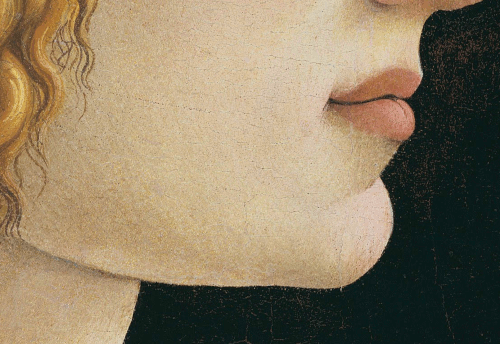
Idealized version |
- The title of the painting refers to portraits, particularly in the Renaissance, that present a woman not just as she is, but as an idealized version of beauty and virtue.
- Many old masters have paintings of women named as 'Ideal'
where the sitter, is depicted with luxurious details and a mythical aura.
|
The fantastical accoutrements in this larger-than-life-size half-length painting of a young lady make it clear that it is not a likeness in the strict sense, but an ideal portrait in the mythological guise of a nymph. (sammlung.staedelmuseum.de)
|
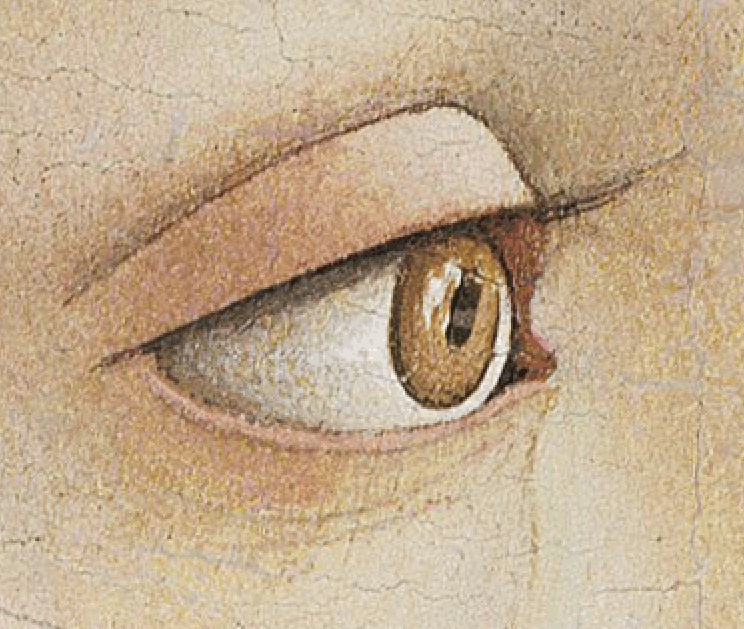
Hazel eyed |
- More recently, some scholars believe it may have been
painted by Leonardo DaVinci who is also believed to be the
true artist of Birth of Venus and Primavera,
currently attributed to Botticelli.
|
In this Portrait of a Young Woman, Botticelli has broken with strict profile to give the viewer a hint of the sitter’s left hazel eye. Lace detailing enlivens her white gown with its pink undergarment. The figure’s neck is long and slender, and her forehead is elongated with thinly-plucked eyebrows, both of which were considered attractive physical attributes at the time. (smarthistory.org)
|
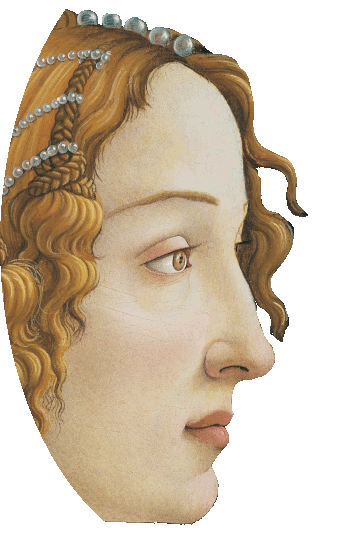
Lady |
- The painting and details are thought to be a newly discovered version of
Idealized Portrait of a Lady by Leonardo DaVinci.
- The much restored known version of this painting is in
Städel Museum of Frankfurt, Germany.
- Curators have been
using the Morellian Method, which employs
subconscious patterns as the basis for the identification of
the artistic style of the artist, was used to determine that
the artist is really DaVinci.
|
Today, Portrait of a Young Woman shares acclaim alongside the works of Leonardo da Vinci and Michelangelo as an example of the best artwork to emerge from the Italian Renaissance. It holds an honored place in Stadel Museum of Frankfurt, Germany alongside with Rembrandt's Paintings and the masterworks of such revered painters as Van Eyck, Fra Angelico. (sandro-botticelli.com)
|
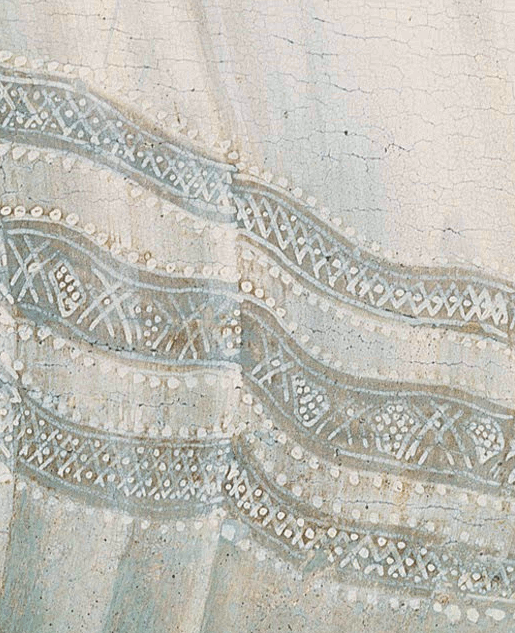
Lace |
- Leonardo lived in Milan and worked on court portraits.
- He painted several portraits of young women, with the most famous being the
Mona Lisa.
- Other notable examples include Ginevra de' Benci,
La Belle Ferronnière, and
Lady with an Ermine.
- These paintings, along with studies like Head of a
Young Woman with Tousled Hair, showcase Leonardo's skill in capturing the beauty, personality, and subtle emotions of his subjects.

Dragon hair |
- There is a known Leonardo DaVinci drawing he created for a dragon costume,
that has the same
autographic writhing snake-like ringlet patterns, as in the
hair of the Idealized Portrait of a Lady.
- Misattributed to Sandro Botticelli, this original Leonardo
DaVinci drawing is
compared to the new version of the painting.
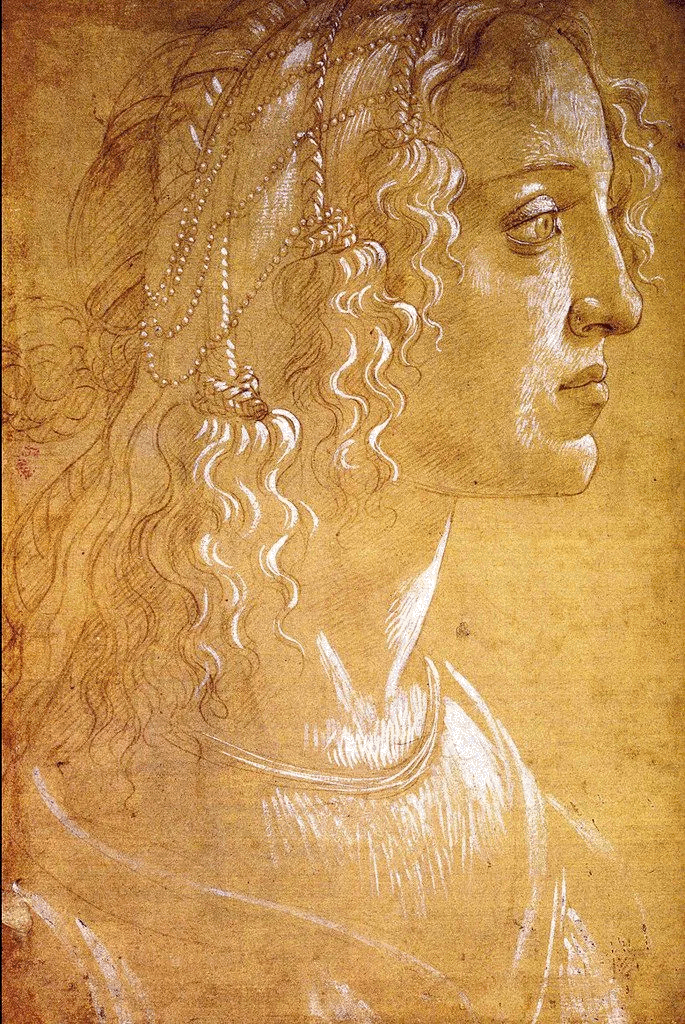
Study
of the Ideal Lady |
- There are
also intricate clues the artist for the sketch was DaVinci
because white highlights, in the hair of his drawing,
correspond to golden highlights, in the hair of the painting.
|
This painting is often associated with Simonetta Vespucci, a fifteenth-century Florentine woman famously praised in art and poetry for her beauty, but it is probably not an objective likeness. Rather, the work belongs to a genre of idealized portraiture made by Florentine artists in the 1460s and 1470s. (cincinnatiartmuseum.org)
|
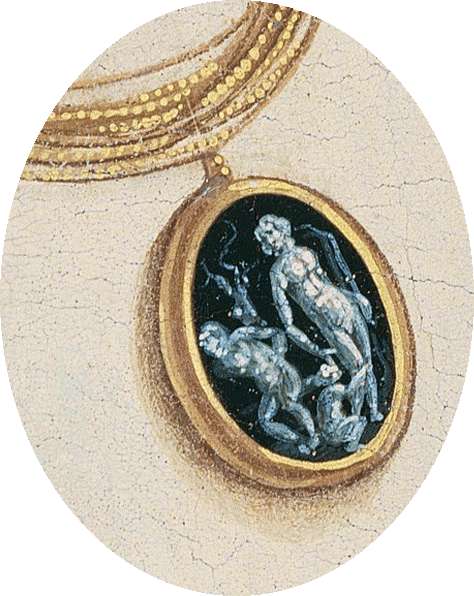
Cameo |
- The woman is shown in profile but with her bust turned in three-quarter view to reveal a cameo medallion she is wearing around her neck.
- The medallion in the painting is a copy in reverse of
Nero's Seal, a famous antique carnelian engraved gem dating from the time of Augustus.
- It pictures the Greek god Apollo and the satyr Marsyus, who challenged Apollo to a music contest and lost.
|
The pendant on the woman’s necklace is the Sigillo di Nerone, which displays Apollo, Marsyas and Olympos. Pendants with the Sigillo di Nerone were highly valued. Lorenzo de’ Medici owned one, and it was one of his prized possessions (Vincent DeLuise)
|
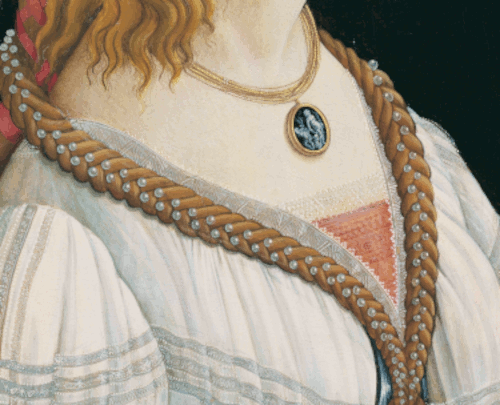
S for Simonetta |
- The jewelry shows Apollo flaying Marsyas for displeasing him.
- This was an important piece of jewelry and it belonged to Lorenzo de' Medici.
- The pendant also places her in the immediate circle of the
Medici.
- Scholars have pointed out that she is depicted facing right, a convention for deceased sitters in the 15th century.
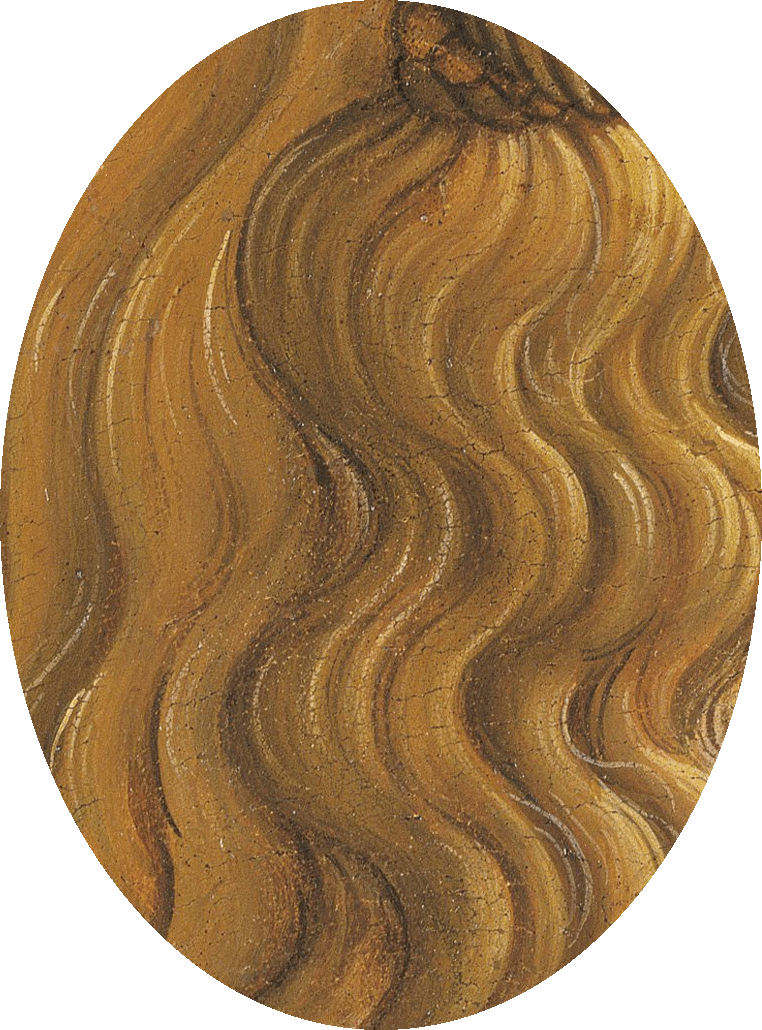
Coiffure |
- Because of the rich adornments she is wearing as well as her elaborate coiffure, experts believe that the artist has created an idealized vision of the young woman.
- He may even have elevated her to the status of a goddess.
-
Her hair is blonde, the shade considered most beautiful for women in the period, which is why many Renaissance depictions of Mary show the Mother of God with golden-colored hair.
|
Simonetta Vespucci was the “it-girl” of Quattrocento Florence, considered one of the most beautiful women in the city. Both Medici male heirs, Lorenzo de’Medici the Magnificent and his younger brother Giuliano de’Medici, publicly declared their admiration for Simonetta. (smarthistory.org)
|

Fantastical dress |
- Fantastical dress is an imagined clothing style, depicted in images as even more ostentatious than common public wear.
- The side profile portrait was very common since it resembles the Roman coinage and allows the viewer to admire her beauty without opposition or shame.
|
Some scholars have linked fantastical dress to Florentine public processions, which often included a costume element called “disguisement.“ (smarthistory.org)
|
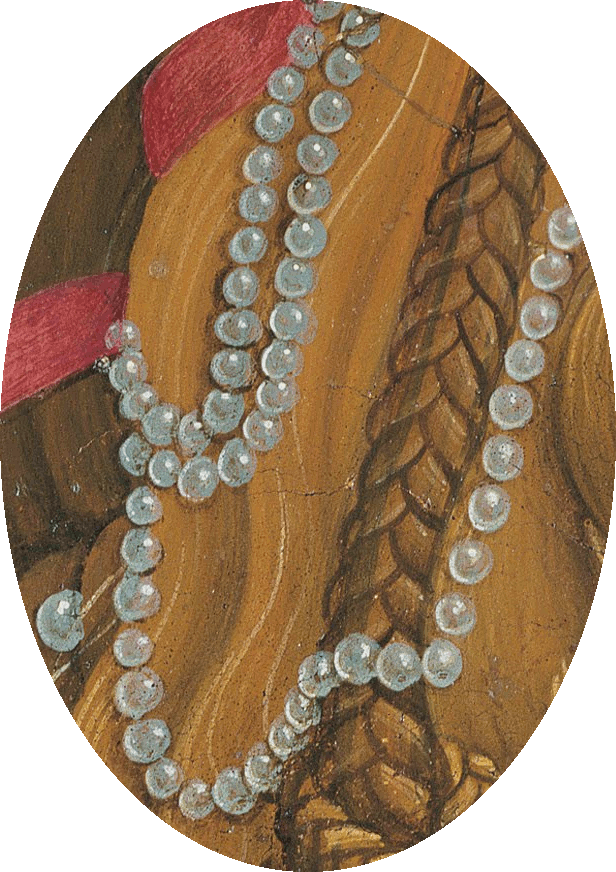
Pearls |
- Art historians generally agree that the subject is the lovely Simonetta Vespucci, a Florentine noblewoman who died at the age of 23.
- At one time, she was among the leading beauties of Florence
and was known as the prematurely deceased mistress of Giuliano de’ Medici.
|
With its braids, ribbons, curls, and intricate knotting, it is unlikely this coiffure could have been achieved in reality. (smarthistory.org)
|
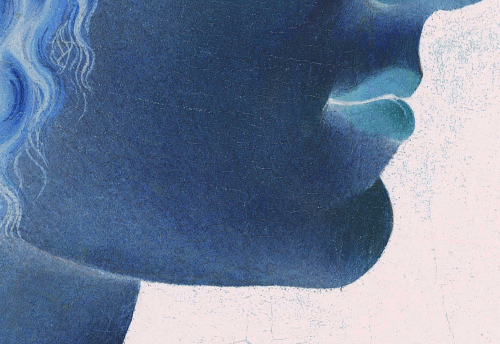
Just a memory |
- However, this is common for Botticelli's main female character
in all his Venus paintings to be associated with Simonetta,
although she had died several years earlier.
|
In order to obtain the flawless complexion of the character, the artist uses a special mixture, terre verte - a green, earthy tone - to under paint, and afterward layers the flesh- like tones over it to create diverse shades of pink, yellow, and orange. Botticelli shows brilliant control of the tempera painting technique making use of fine lines and shapes to discreetly build up contrasts and create the depth and texture of the portrait. (wikiart.org)
|

Jewel |
-
Sprays of feathers spring from the broach in the figure’s hair, and pearls, symbols of chastity and sometimes pregnancy, dot the hairstyle.
- Incidentally, Botticelli worked under the patronage of the Medicis and also painted a portrait of Guiliano de'Medici.
|
Botticelli never married and some believe that this painting arose from his unrequited love for Simonetta Vespucci. He had also asked that he be interred at the foot of her grave when he died. Simonetta Vespucci has been the subject of many other Botticelli works: Primavera, Mars and Venus, and The Birth of Venus. (sandro-botticelli.com)
|
|
Portrait of an Ideal Lady #2 |
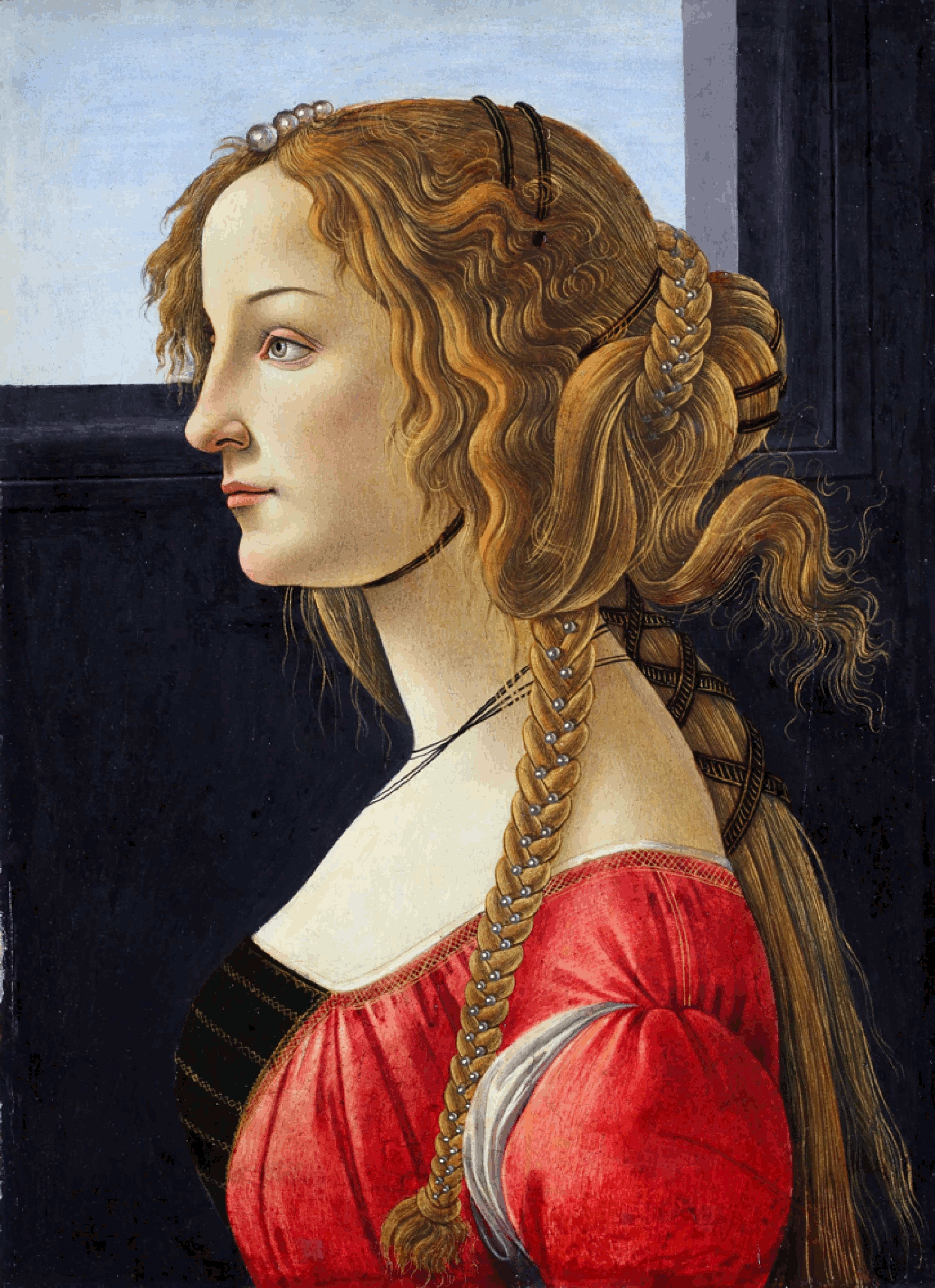
Sandro Botticelli, Gemäldegalerie, Berlin
1475-80 |
- A second, very similar Botticelli portrait is also
attributed as Simonetta Vespucci called Profile Portrait
of a Young Woman.
- Tempera on poplar panel and is in the collection of the Gemäldegalerie, Berlin.
|
She wears a red dress with slit sleeves through which her white undergarment is visible. The center front of the woman’s dress has a black panel decorated with horizontal lines made up of small gold diamonds. (cincinnatiartmuseum.org)
|
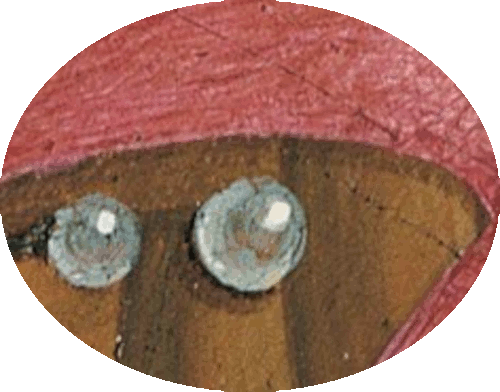
Marco Vespucci |
- Simonetta Vespucci (née Cattaneo; 1453 – 26 April 1476), nicknamed la bella Simonetta, was represented
as the image of desirable woman.
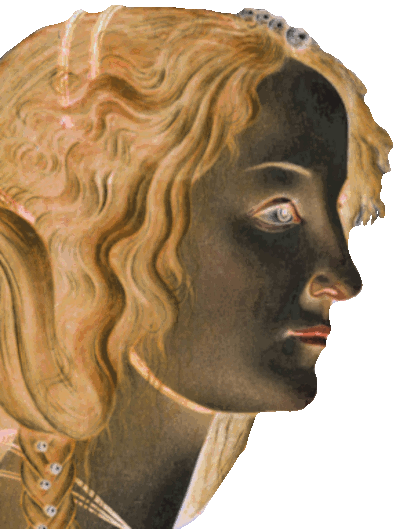
Noblewoman |
- She was a Genoese noblewoman who married Marco Vespucci of Florence at the age of either 15 or 16, and who was renowned for being the greatest beauty of her age,
and certainly of the city of Florence.

Beauty |
-
Allegedly, Simonetta’s visage served as main inspiration for
Pallas Athena (Pallas and Centaur), Primavera, and
as Venus in numerous instances such as The Birth of Venus and Venus and Mars.
-
She also possibly was a prototype for Piero di Cosimo’s
Portrait of a Woman
in 1490.
- Simonetta died a premature death in 1476, four
years before Botticelli crafted his portrait.
|
At her funeral, Simonetta was remembered by Lorenzo
de’ Medici (Florence’s political mastermind) for being
“so sweet and charming that all the people who either
knew her or knew of her believed that she was in love
with them.” (Emanuele Lugli)
|
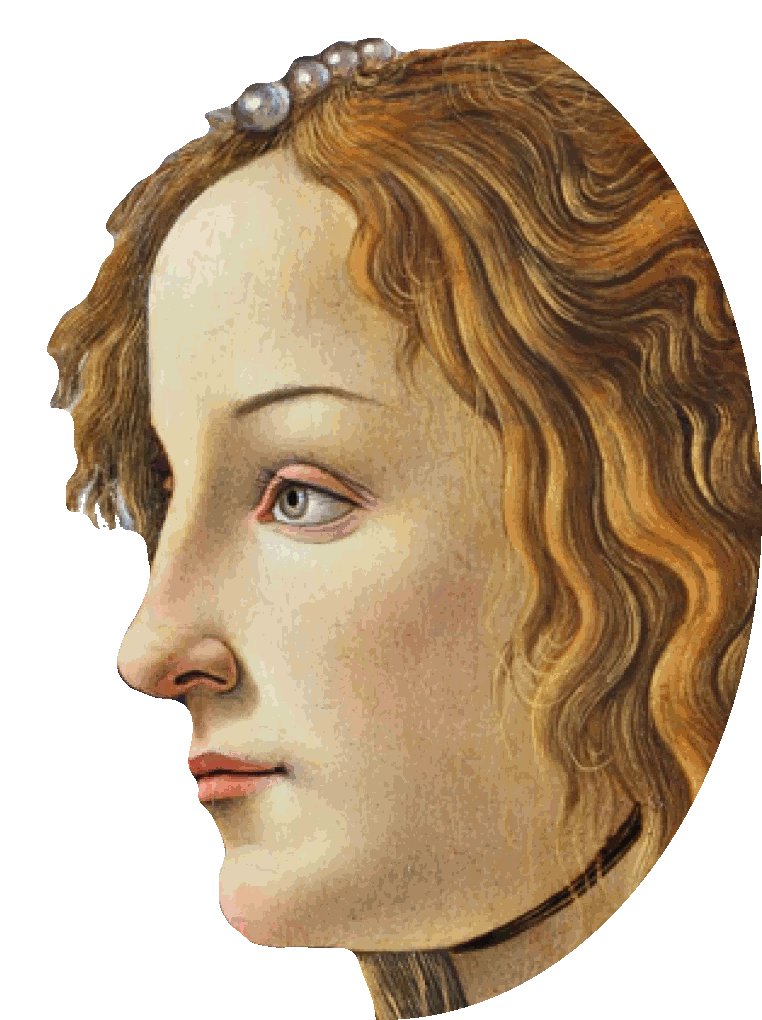
Venus |
- Some have even come to the conclusion that the subject
of the painting was Clarice Orsini, who was married to Lorenzo
de Medici.
- Clarice and Lorenzo wed in 1469, after the marriage was arranged by Lorenzo's mother,
Lucrezia, who wanted her eldest son to marry a woman from a noble family to enhance the social status of the Medicis.
|

